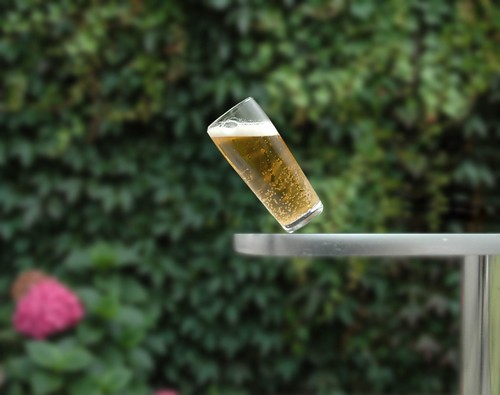I
love that some of the regional breweries are looking sideways, forwards and
backwards in order to appeal more broadly to different drinkers. Fuller’s have
got the Past Master’s series, the barrel-aged beers and delightful seasonals;
Adnams have long made interesting seasonal beers and limited-run specials;
Brains have built a craft brewery on the side for producing different beers,
including a run of IPAs; just yesterday a bottle of Progress arrived from Black
Sheep, a special 10% ABV beer to celebrate 20 years of brewing, and that sits
nicely beside their excellent Imperial Stout; and Shepherd Neame have been
brewing small batch beers on a handsome little pilot system for a few years now
without really shouting about it, then they released Generation Ale, a
wonderful 9% ABV strong ale, and now they’ve brought out an India Pale Ale and Double Stout.
Being
a Man of Kent, I’ve grown up with a constant presence of Shepherd Neame, with most
drives through the county taking you past at least one pub with their familiar
red sign, yet I’ve never really drunk much of the beer. But this year I’ve
had four Sheps beers which have massively impressed me. The Generation Ale is
an excellent beer, aged in tank for a long time, it’s got a deep complexity of
chewy malt and spicy, fragrant hops, think roasted oranges, sherried fruit and
toast. There was also a green-hopped beer, 5.5% ABV, and a real ripper of fresh
hop flavour, pungent and intense. And now there’s the India Pale Ale and Double
Stout, historic-styled, in liquid and design, they look back to old brewing
books and make the styles relevant today.
The
India Pale Ale (6.1% ABV) is a brutal thwack of Kent-grown Fuggles. Amber in
colour, the flavour is a wild spectrum of hop from earth to berries to
chocolate and wood. The bitterness is uncompromising, hitting the tongue with bracing
force, balanced by caramel and vanilla in the body. It’s got that indefinable Fuggles-thing
which makes it such an interesting hop, a flavour that’s almost impossible to describe
but marvellously, massively English and in this beer it's really showing off.
Double Stout (5.2% ABV), for me, is completely evocative of early November. You know how you can walk outside on a
clear cold night, when fireworks have been exploding all around, and the air
smells of treacle, smoke and leaves. This beer makes me think of that. It’s
black, full of a roast bitterness, ashy smoke, liquorice and an intense
almost-savoury dry, dark malt character which clings onto a bold smack of bitter
hops.
Both
beers are excellent. There’s a fullness, complexity and depth to them and they are great side-steps from the core products. I think they look
brilliant as well – as soon as I saw the design, I wanted to drink the beers.
It’s
great to see regional breweries stepping outside of their best bitter comfort
zones and producing wider varieties of beers. One thing most of these regional
breweries have over others is history. It’s good to see Shepherd Neame using it and
making it relevant today.
All of these images are from Oh Beautiful Beer. From this post and this one.










